Custom Group Benefits

We design group benefits plans that help small businesses attract top talent, keep great people, and protect their teams—all without breaking the budget. From health and dental to life and disability coverage, we build flexible, cost-effective solutions tailored to your team’s needs. Whether you’re starting from scratch or upgrading your existing plan, we make it simple, strategic, and scalable. Because great benefits aren’t just a perk—they’re a competitive edge. Speak with an expert and contact us at 905-850-5267 for a free quote.
What We Offer

Dental
Protect your team’s health and confidence with affordable, reliable dental coverage they’ll actually use.

Life Insurance
Give your team peace of mind with life insurance that protects what matters most—their families.

Health & Wellness
Support your team’s total well-being with coverage that promotes physical, mental, and emotional health.

Vision & Prescription
Keep your team sharp and focused with coverage for eye care and essential medications and treatments.
Traditional Plans

Consultation
Plan Design/Analysis: With new quotes and renewals; Risk and Liability Analysis; Traditional Products; Individual Products.

Administration
Online Enrolment; Online Claims Submission and Tracking; Claims Escalation Support.

Communication
Administrator Training; Group Seminars; Web Training; Taxation/Liability Issues for Employers.
Health & Wellness Spending Accounts

Aids In Cost Management
A great way to manage the costs of your benefits plan while still providing value to your employees is through the allocation of your benefits. This is accomplished by moving an insured benefit to your HSA.

Flexibility For Your Employees
Because any CRA-approved medical expense can be claimed under an HSA, you are providing your employees with the flexibility to claim what matters most to them.

Promote Employee Wellness
While an HSA is for medical expenses, its wellness counterpart allows for employee reimbursement of a wide range of wellness expenses like gym memberships, fitness equipment, professional development courses and more.
FAQs
The main difference between these two benefits is the availability of what can be submitted as a claim. For a health spending account, only CRA-approved medical expenses can be submitted.
Conversely, eligible claims to a wellness spending account are geared more towards items that promote a healthy lifestyle like gym memberships and professional development classes.
A health spending account provides employees with the option to choose what to claim. For example, if the monetary amount for a benefit like vision coverage was moved from the traditional benefits plan and into an HSA, it would provide an employee who doesn’t wear glasses with the opportunity to put that money towards something that has significance to them.
Yes! Health and wellness plans can be offered as a standalone benefit or they can be combined with a traditional benefits plan to provide a comprehensive solution for your employees.
A health spending account can help to manage costs through what is called an allocation of benefits.
Using vision care as an example, a common benefits plan will have $150-400 every 24 months to cover vision costs that extend beyond eye exams. If you’re already paying for vision coverage within your benefits, the cost per claim ends up being around 30% on top of the claim itself depending on your firm’s target loss ratio.
By transferring vision coverage to your HSA, you’re not only managing costs but providing more value and flexibility for your employees. Vision coverage is just one example to replace with an HSA.
Administrative Services Only

Fees Based On Claims Paid
Your fees and taxes are calculated based on the actual claims paid, whereas with traditionally funded plans you pay taxes and fees based on your overall premiums paid.

Lower Administration Costs
With an ASO plan, the administration fee percentage is typically lower than traditionally funded programs which equate to bottom-line savings for your business.

Endless Plan Design Options
ASO plans carry an immense amount of flexibility which allows for tailoring of deductibles, co-insurance, covered benefits and exclusions to perfectly fit the needs of your employees.
FAQs
Yes – companies who are looking to go ASO need to be comfortable with ebbs and flows in monthly costs as it pertains to health and dental claims. Claim amounts can fluctuate from month to month so a business that wants to explore implementing an ASO plan should have a comfortable level of cash flow.
No. This is a common misconception in the industry, however, an ASO plan doesn’t carry any more risk than traditionally funded programs. With an ASO program, you will still have a plan design in place that has limitations surrounding what can be claimed and how much – the only difference is that the company is paying the claims directly rather than the insurance carrier reimbursing the claims from premiums paid. Furthermore, companies who choose to go ASO are well established and have had benefits in place for some time. This provides a healthy history of claims experience to look back on which can help to guide an expectation for ongoing costs.
One of the benefits of an ASO model is that your fees and taxes are paid based on the actual claims paid, whereas with traditionally funded plans you pay taxes and fees based on your premiums paid, and the fee percentage is typically lower with ASO than with traditionally funded programs.
An ASO plan also has incredible flexibility when it comes to creating a plan that truly meets the needs of your business and your employees.
In an ASO plan, the employer can enjoy the advantages and savings in a few ways. The first of which is a favourable claims experience. From the perspective of a traditionally funded program, when the claims experience is better than anticipated, those savings are profit for the insurance company. In an ASO model, a favourable claims experience is realized in cost savings for the company.
Additionally, because the administrative fees of an ASO plan come at a lower cost than a traditionally funded model, the company will experience cost savings in this area as well.
Group Retirement

Encouraging Savings
A group retirement savings plan (GRSP) is a great way to encourage employees to save for retirement. Employees who choose to contribute to the GRSP will have a percentage of their income deducted from each pay cheque and put directly into the plan design that they choose.

Profit Sharing Plans
Like a GRSP, a deferred profit sharing plan (DPSP) helps your employees save for their retirement through an employer-only contribution. DPSPs are advantageous allow for avoidance of additional payroll expenses and provide employers with the ability to control when and how the money is withdrawn.

Gain A Competitive Edge
In a competitive employment market, the total compensation package you provide for your employees can encourage employee retention and incite the right talent to join your organization over that of a competitor.
FAQs
While they both contribute to an employee’s retirement savings, a DPSP is limited to employer contributions only.
Additionally, when an employer contributes to a GRSP account, CRA views the contribution as additional pay. Both the employee and employer have to pay their share towards EI & CPP. In a DPSP, neither the employee nor the employer will have to pay additional payroll expenses for contributions to the account.
EFAP (Employee/Family Assistance Program
An Employee AND Family Assistance Program (EFAP) offers a variety of confidential counseling and support for employees and their families. Some of these services include:
- Professional Counseling
- Family Support
- Financial Support
- Health Coaching
- Legal Support
- Naturopathic services
- Nutrition Support
- Fitness Support
- Stress coach connects
- Separation and divorce
- Smoking cessation
- Family planning services
- Enhancing your relationship
These services are provided by an independent third party and guarantee confidentiality for anyone who calls in looking for assistance in any form. Services are offered over the telephone and online, and are available 24 hours a day, 365 days a year.

Smarter Employee Benefits For Small Business Success
Smart plans, sustainable costs. We help you manage rising benefit expenses while keeping your team covered and happy.
01. Business consultancy
02. Financial planning
03. Market research
04. Customer support
Boosting business with our help
Services

Group Benefits
Protect your team with top-tier health, dental & disability coverage. Boost morale & retention today!

Corporate Insurance
Protect your team with top-tier health, dental & disability coverage. Boost morale & retention today!

Group RSPs
Help employees save for tomorrow with Group RSPs. Boost financial wellness & loyalty. Book a call today!

Retiree Benefits
Retirement shouldn’t mean losing benefits. Custom retiree health plans for peace of mind. Get free quote!
Custom benefit plans that grow with your business


Your people aren’t just employees—they’re your advantage. And advantages deserve protection. Strategic Benefits delivers the ammunition to win the talent war—bespoke benefit arsenals that make recruitment effortless and exit interviews rare.
Why clients choose us
Their innovative approach and insightful recommendations helped us streamline operations and boost profitability within just a few months.

Sarah Green
The consulting team’s expertise transformed our strategy, driving growth and efficiency across all departments in record time.

Sam Smith
Thanks to their guidance, our business achieved measurable results, with improved processes and stronger financial performance.

Nick Carter

FAQs
What types of employee benefits are most common for small businesses in Canada?
How much do employee benefit plans typically cost?
Are there tax advantages to offering employee benefits?
Do benefits really help with employee retention?
Can small businesses with fewer than 10 employees get affordable benefits?
Absolutely. Many providers offer scalable group plans tailored for small teams. Pooled plans (where multiple small businesses join together) can also reduce costs while maintaining quality coverage.




